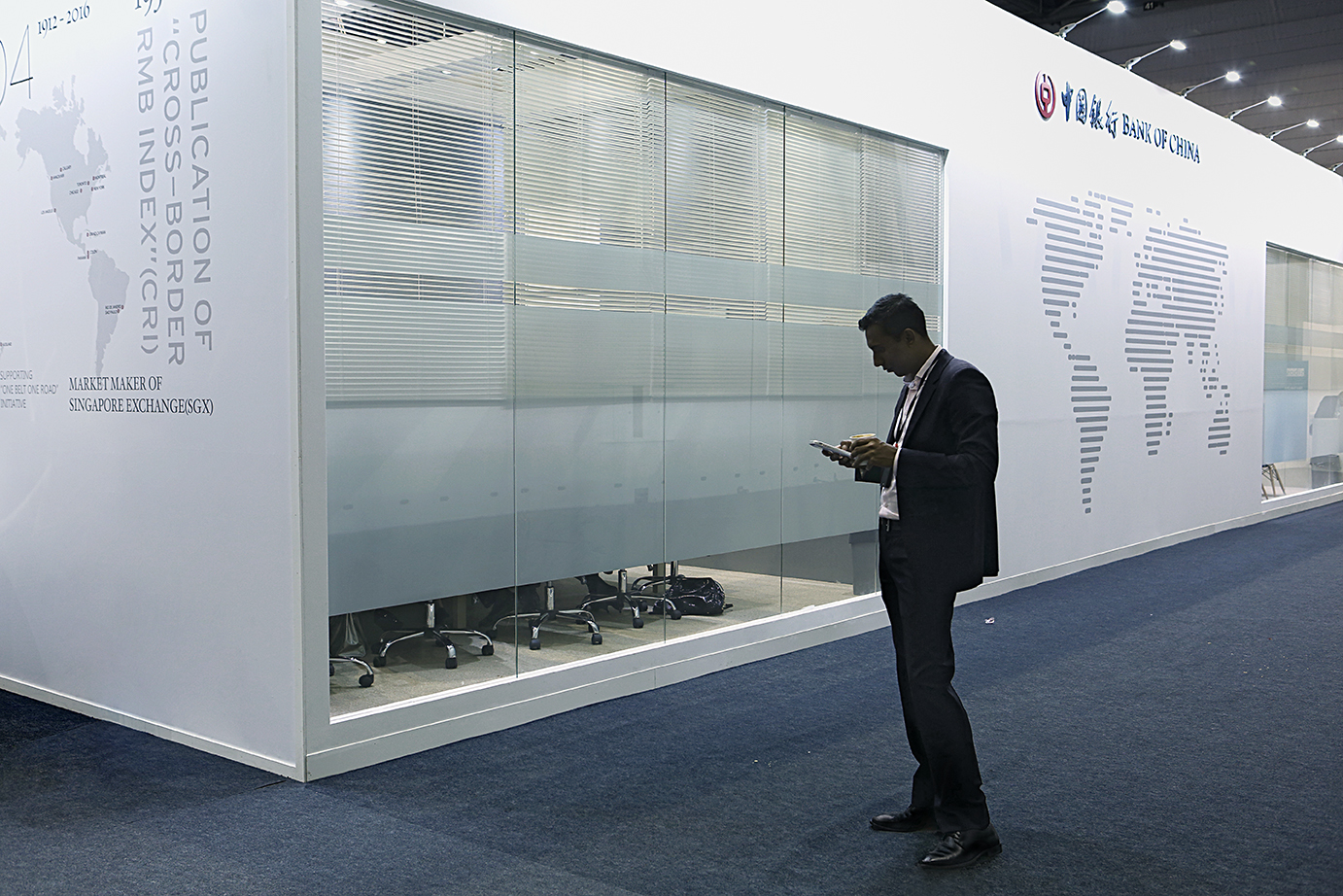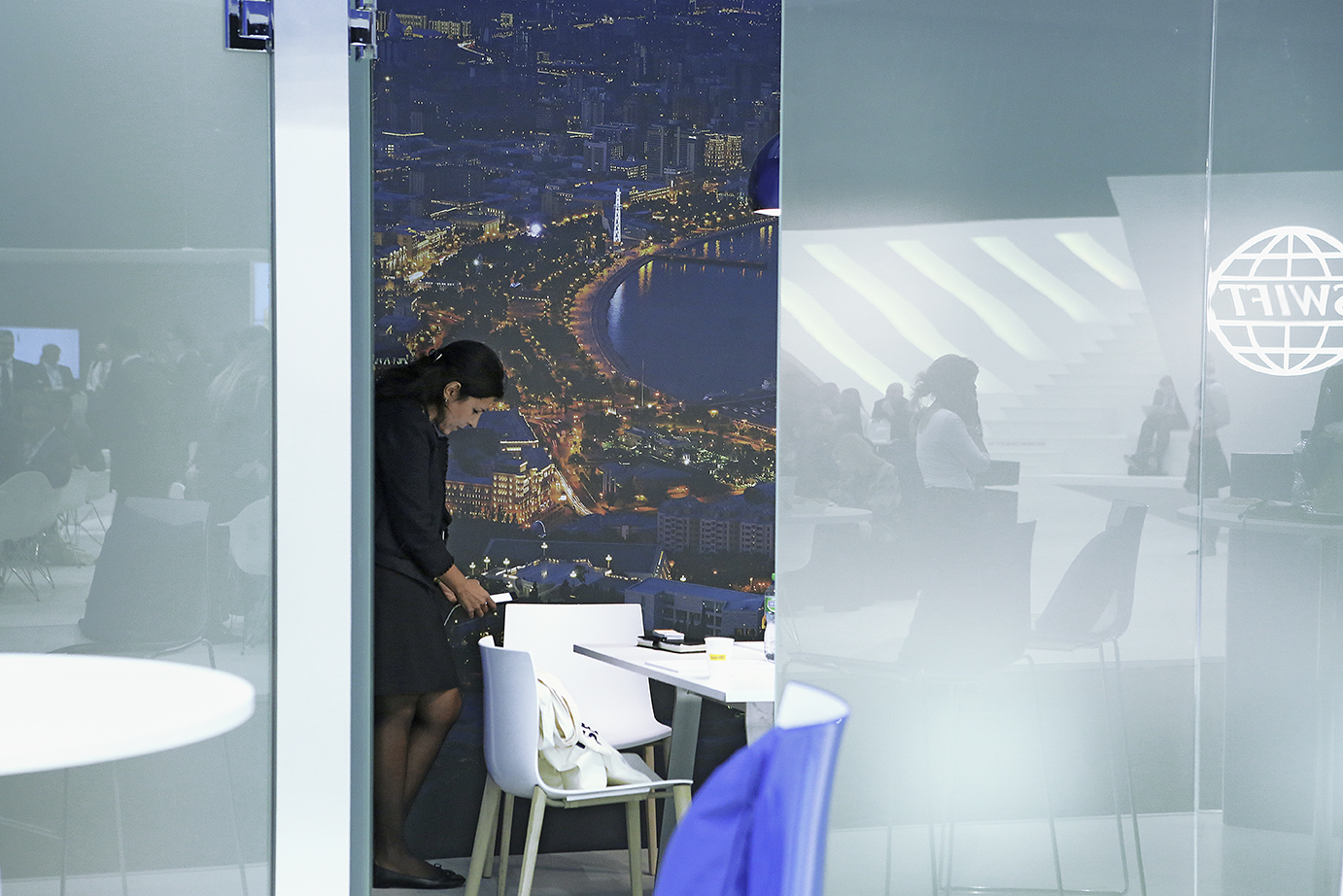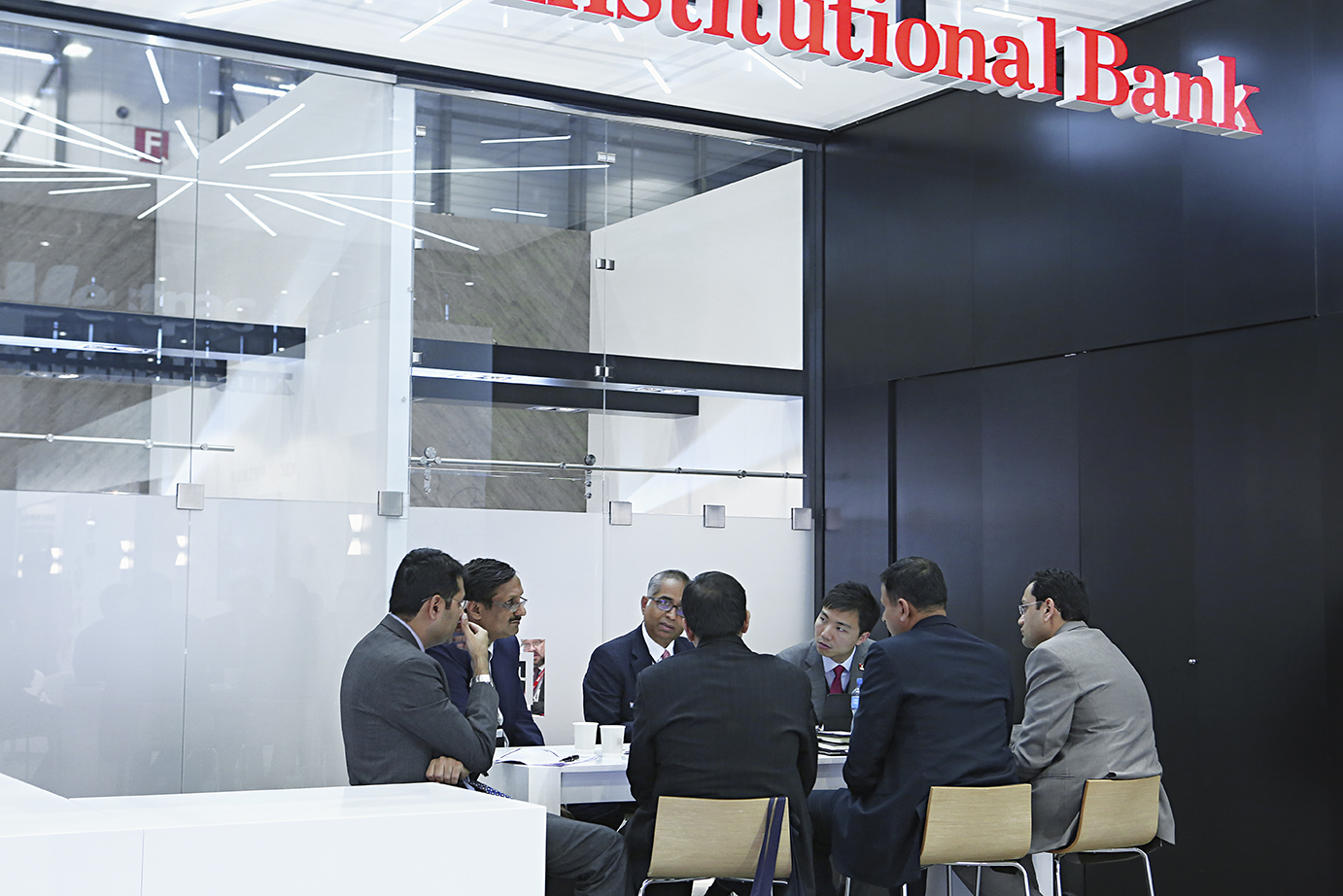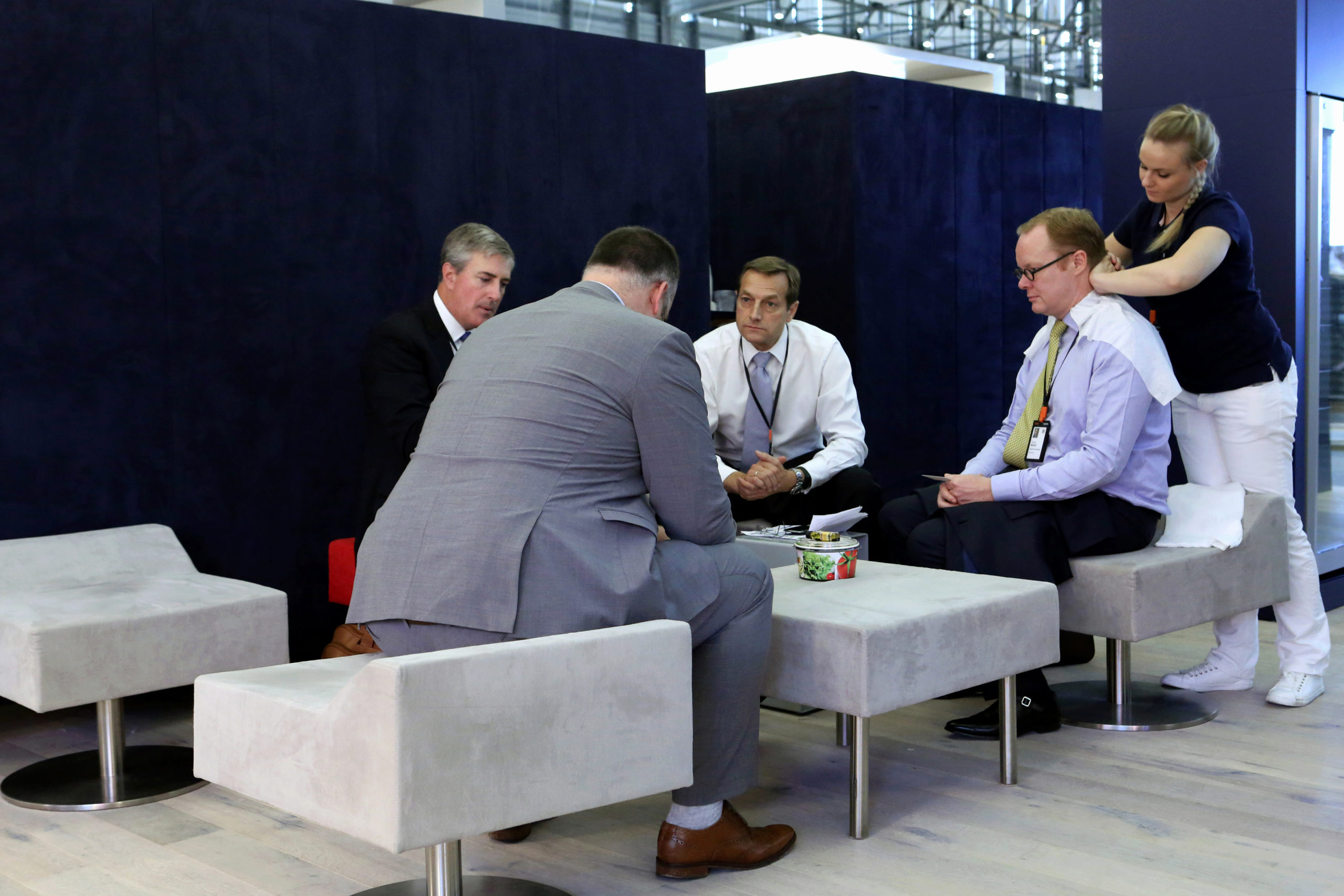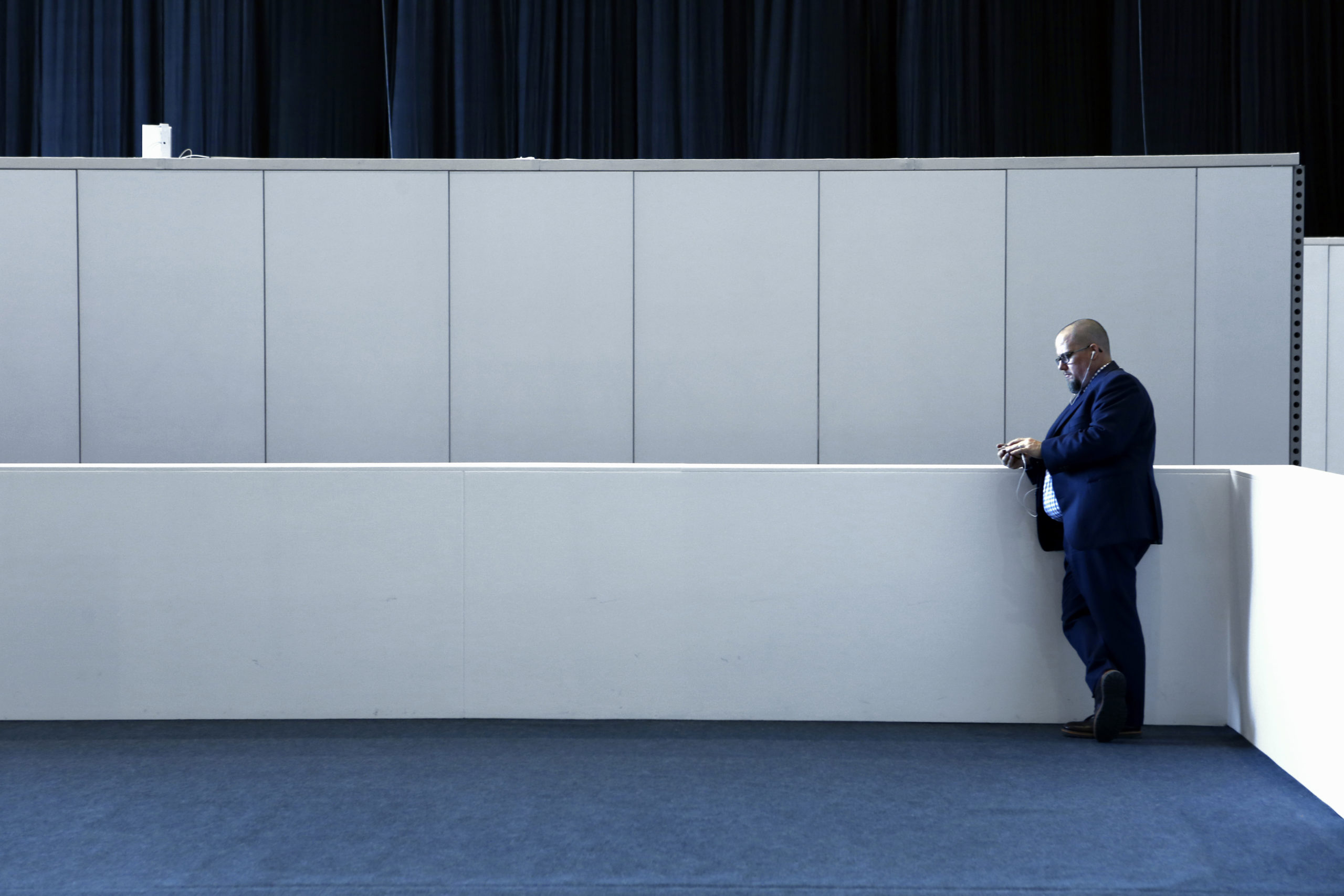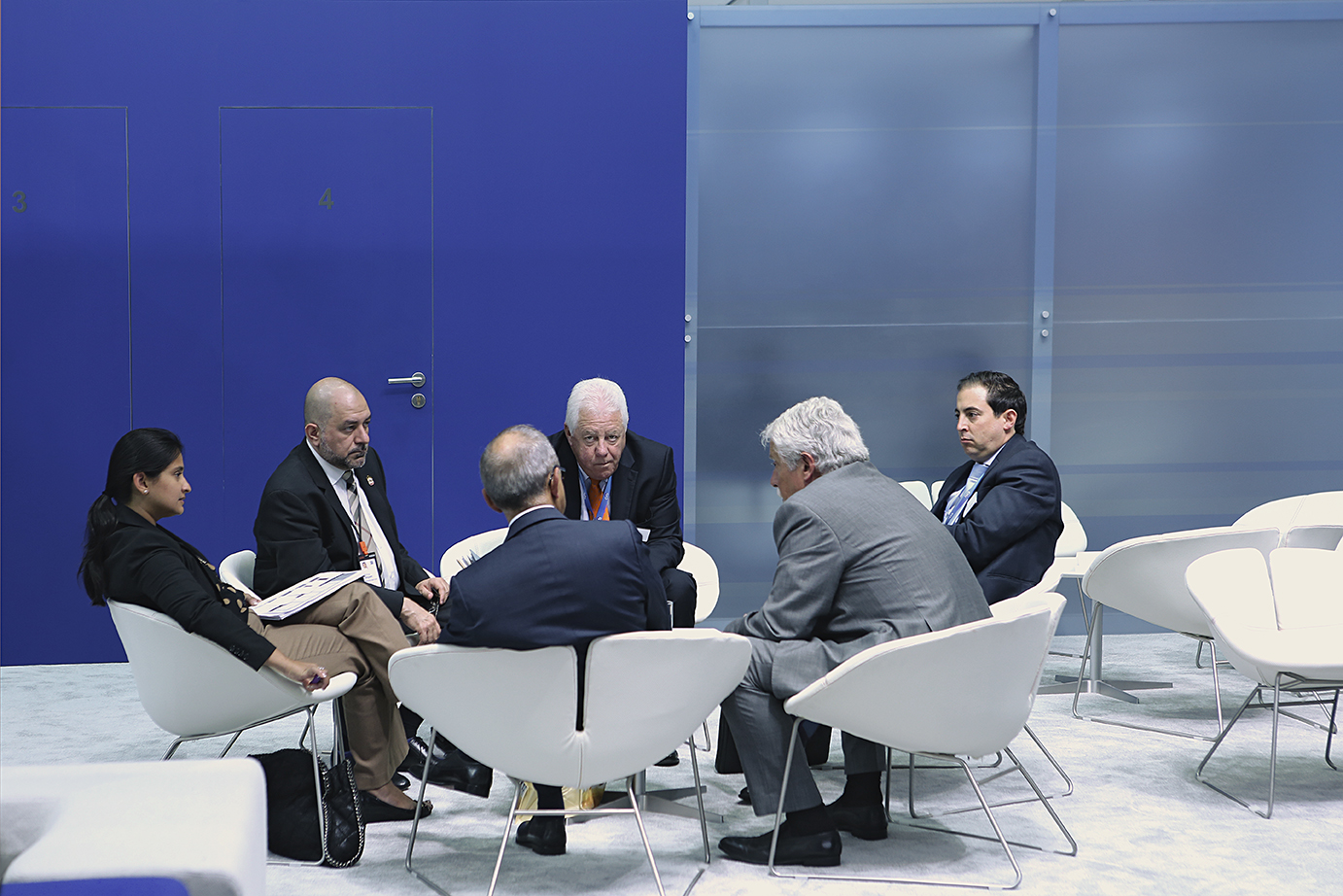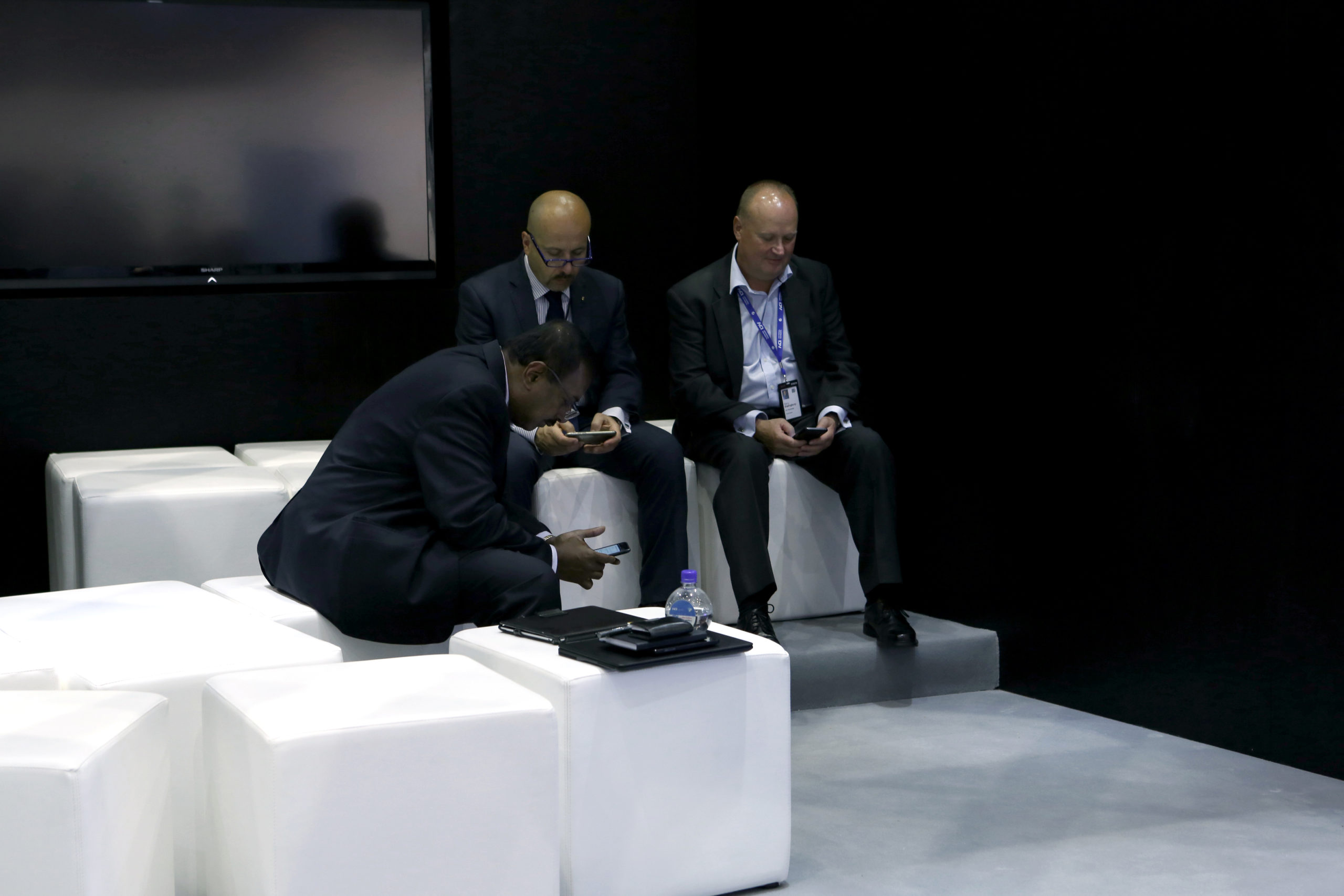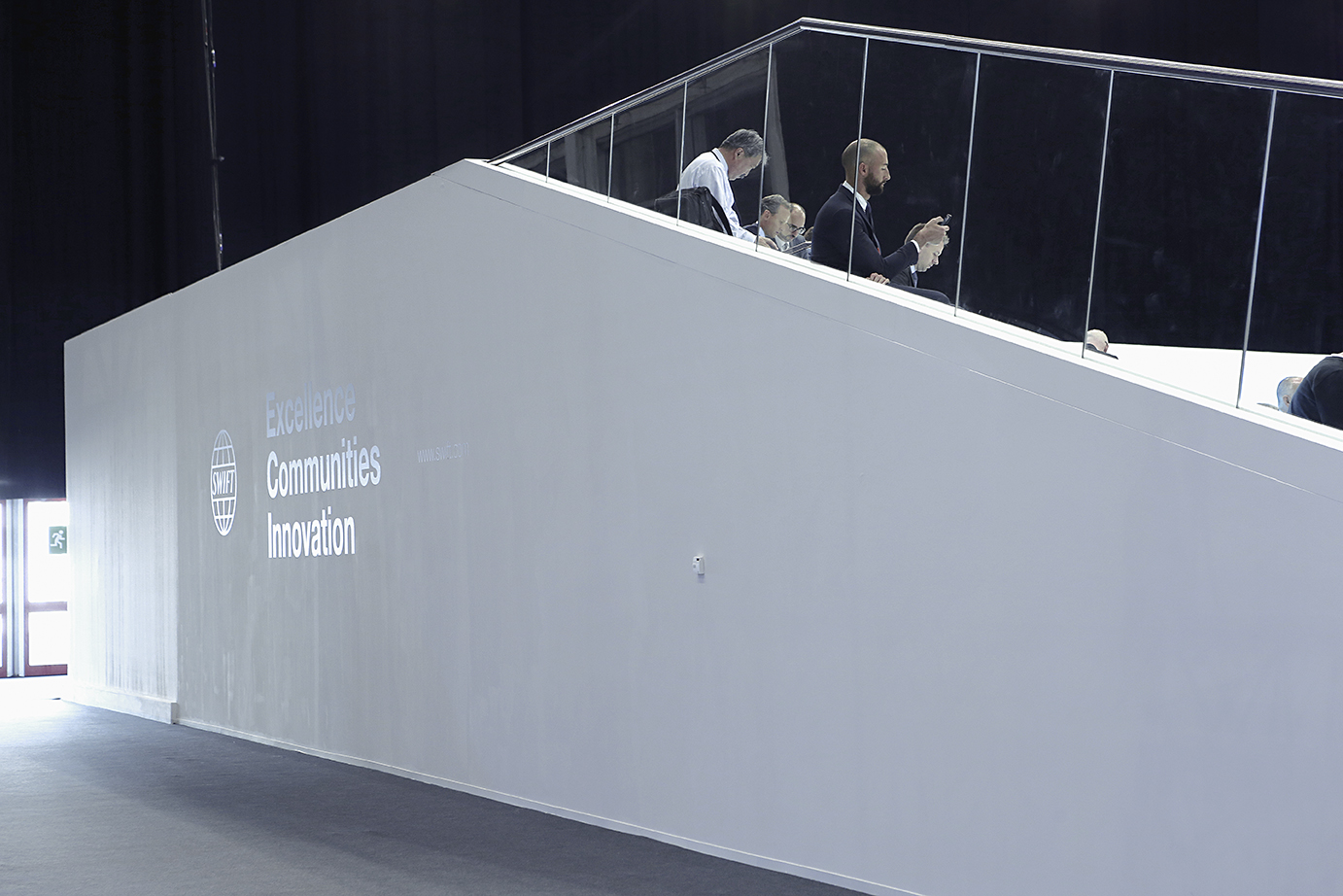Cable Depot, Sofia
Gabriela Löffel
Permanent Collapsing
The arms trade expresses its public face in various ways, including through arms fairs. Riding on the rich legacy of military history museums and their link to national values, commercial arms exhibitions are a “public secret”. The seemingly discreet nature of these trade shows relies on a combination of hyper-visibility and concealment. They are held in vast, monumental buildings and attract a growing number of exhibitors, national delegations, and visitors. Their open days include programmes of meetings and talks, and prizes are awarded for the best weapons exhibited. The transactions that take place in these settings, however, remain largely private.
The size of the international arms fair that Gabriela Löffel visits in Poland in 2012 is imposing. The fair is held on the same premises that regularly host agricultural or industrial fairs. Thousands of square metres of exhibition space divided into booths showcased pictures and prototypes of military products and tools displayed on stands. In the middle of these objects, the artist initiated a conversation with the head of an arms company. In the foreground, the man addresses the camera, describing a broad range of items, from guns to cannons, and even armoured tanks. The occasional hand movement and some amused laughs emphasise his calm delivery in fluent English. Sometimes, his gaze fixes on the camera and sometimes he looks up, as if searching for information.
In the installation Embedded Language (2013), the arms executive’s language is deconstructed on the screen on the left. This is where Jean-Luc Montminy appears – an actor and voice artist who has lent his Canadian French voice to Hollywood actors such as Denzel Washington and Bruce Willis. The artist tasked the team – Montminy, a sound technician, and a studio director – with dubbing the words of her arms fair interviewee in French. His words and also the laughter are repeated, to moderate the intonation. At times, the images scroll by without words, while the camera pans to the look of concentration or perplexion on the voice artist’s face, particularly when the conversation turns to the flourishing prospects of the arms trade.
In conversation at her Geneva workshop in July 2025, Gabriela Löffel explained to me that juxtaposing a dubbing suite and an arms exhibition was an exercise in abstraction. Her final translation scaled not only the initial physical setting down to a dubbing studio, but also the interview’s original language. Dubbing facilitates the transition from one form of orality to another – towards a target language which negotiates meaning using standard words and the arms executive’s commercial clichés. The artist does not find a voice, but rather she builds one by contrasting the interview’s hidden language with an eloquent deconstruction. When the voice actor views the interview recording in playback, two approaches to writing history clash; responsibilities and leaps in logic are emphasised while the translation modulates the subject of conversation. In this way, the dubbing and the translation processes become forensic examinations, through which the artist can test words and linguistic evidence, connecting them to their underlying meanings without filling any silences.
Watching Embedded Language, we realise that the gaps and omissions are a form of editing. The very intention of Gabriela Löffel’s video installation is to reveal the voids in the language and slow down its fabrications, in order to capture the exact moments of articulation and the lines that give it overall cohesion. The titular “embedded language” proves to be a scaffolding upon which the artist builds a subsequent discursive space. Her work frequently turns to these “integrated zones of power” where meetings connected to international finance are facilitated. Löffel visits these places to look for her evidence. She then shows, in an unspectacular way, how credibility is performed and reality constructs itself, inviting experts from other professional spheres, most often languages and linguistics, to simply carry out their work in front of her camera.
In 2016, Löffel visited SIBOS, the Swift International Banking Operations Seminar. One of the most important international finance events for businesses and financial stakeholders, SIBOS promises opportunities for professional networking, discussion on future policies, and a public programme of exhibitions and lectures. The photographic series Permanent Collapsing (2025) analyses the material design of this setting, its ostensible accessibility and how underlying discourse is concealed. Computer graphics and plaster and matte glass partitions draw our attention to the power imbalances in speech and the gender dynamics that come into play, encapsulated in the insouciance of a man who sits enjoying a massage from a standing woman during a meeting. Bodies in performance mode, or distracted and at rest, as at the end of a show, blend into the facilities that define the exhibition’s architecture. There is no voice in photography, a medium that the Gabriela Löffel usually reserves for the research phase, preferring to finalise the investigations through the moving image. Silence, however, seems to suit these photographs of individuals alone or in groups, seated in armchairs in sober colours and wrapped in heavy velvet curtains, sometimes in conversation, but more often concentrating on the screen of their smartphone.
– Federica Martini
Curator and course lead for the Master CCC – Critical Curatorial Cybermedia – at HEAD, Geneva




